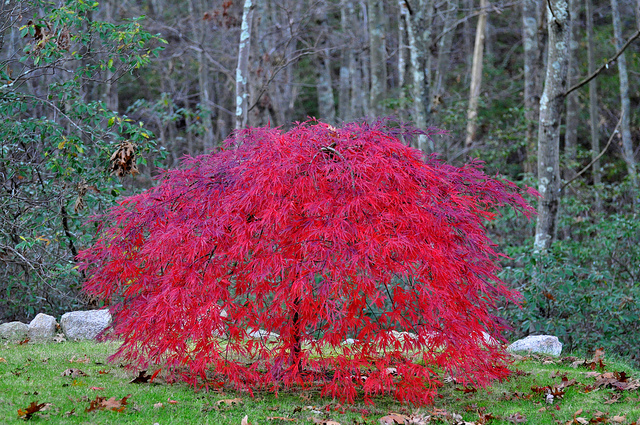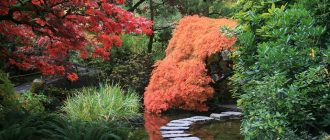Can’t decide on what maple to include in your garden? Discover the brilliance of one of the most favored trees of Asian origin known as the weeping Japanese maple.
The Japanese garden is a place of wonders. Not only do they come across as brilliant works of art in terms of their overall composition rather they sport some of the most amazing species of trees that one can sit and marvel at for hours.
Amongst the main different Asian trees used in Japanese gardens is the weeping Japanese maple. This is one of the most unique variations that comes under the wide umbrella of the Japanese maple category. Known as the Acer Palmatum dissectum Tamukeyana in botanical terms this tree is more commonly known as the weeping lace leaf type of Japanese maple.
The tree bears psychedelic purple foliage which changes to red as winter approaches. The weeping Japanese maple can reach to a height of up to 8 feet with a 12 feet wide spread. This hardy breed is known for its resilience to extremely hot climates.
The weeping Japanese maple can be treated in different manners in order to come up with varying results. Although the essence of the tree remains the same one can alter the process to come up with varying results. For instance if you want your weeping Japanese maple to have green leaves in the spring season then you will have to plant the salix babylocnia.
By default the weeping Japanese male is amongst the first trees to blossom at the advent of spring. At the same time it is the last of the trees to shed its foliage as winter approaches. This is one of the reasons why the weeping maple is preferred by garden enthusiasts.
The weeping Japanese maple is a truly majestic tree in terms of its aesthetic brilliance. The fact that it is such a fast growing tree also adds tremendous value to the breed. The willow extends its branches into separate thin stems and droop their way to the ground.
The pendulous branches are tipped with narrow leaves on its ends. The foliage that grows on the Japanese weeping maple possesses a silky flip side that reflects the light of the sun to produce a brilliant visual effect. The tree by its very nature grows best in areas that are predominantly wet.
Golden weeping willows
The weeping Japanese maple has another variation classified as the salix alba niobe or the golden weeping willow. In terms of its cold hardiness this version of the willow even out does the green maple. The weeping willow with all its wonderful characteristics is a classic addition to the Japanese garden.
The tree has such a powerful presence that it often steals the show in an otherwise under worked garden. Many times the weeping maple is used as the focal point in the composition of a Japanese garden.
When it comes to making a choice between the various colour varieties under the umbrella of the Japanese maple the choices can be overwhelming. You should however go with the kind of tree that blends in best with the rest of the environment and colour scheme.





